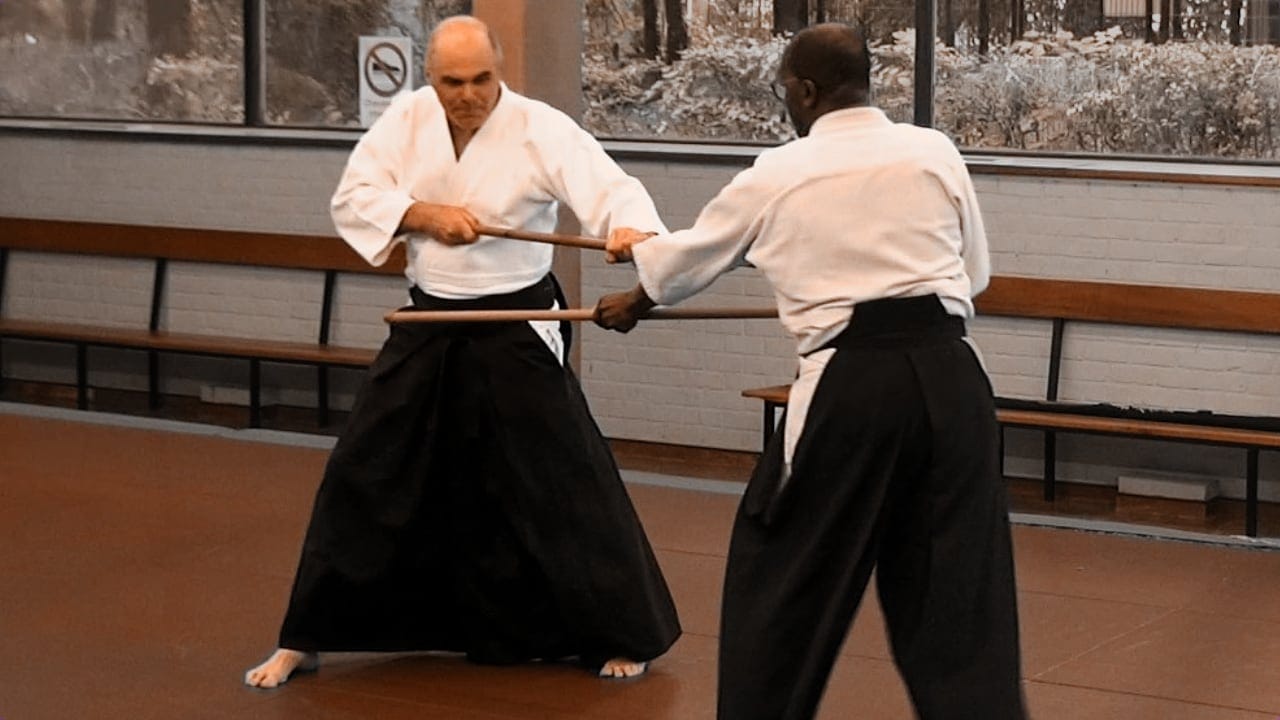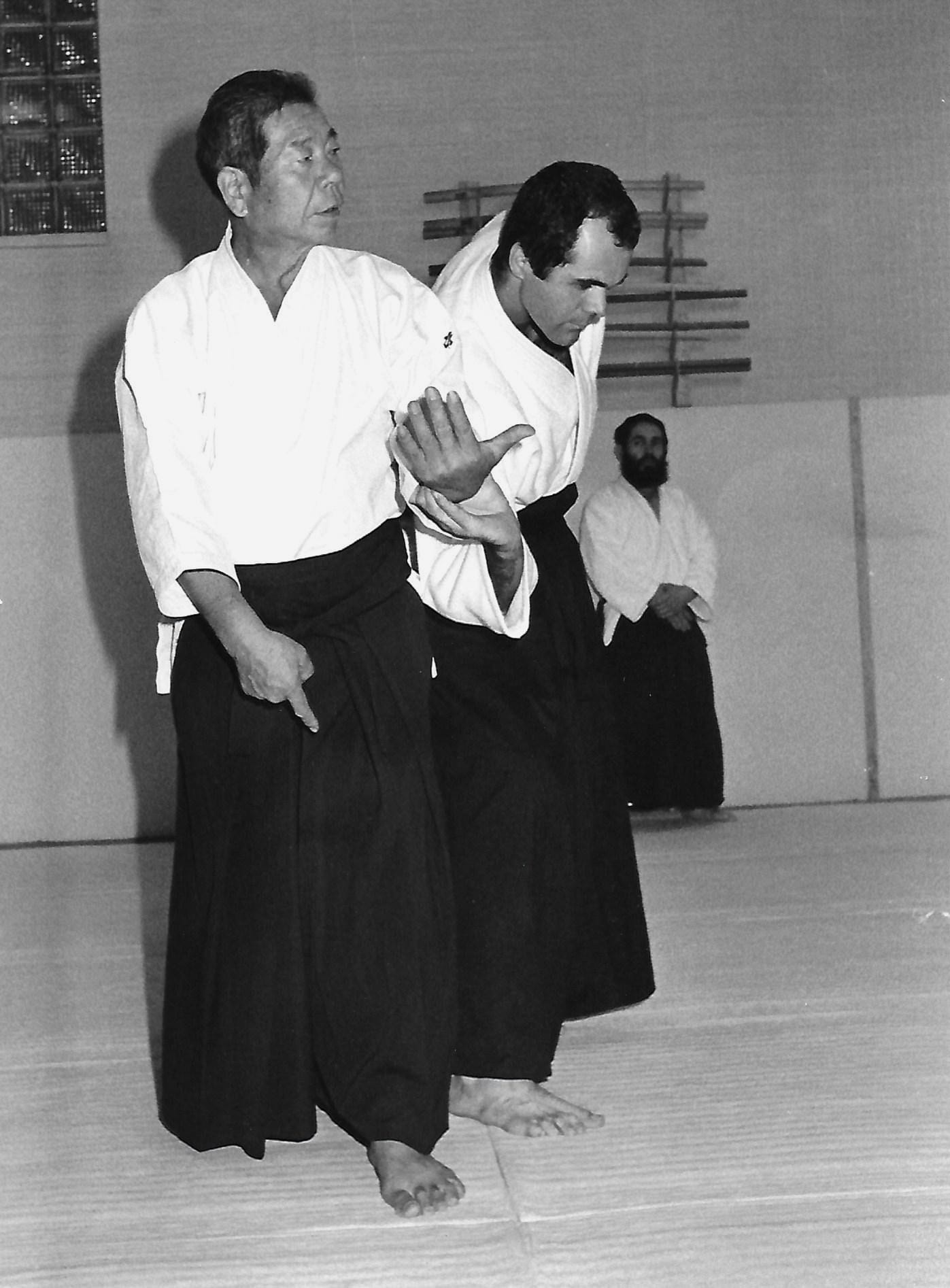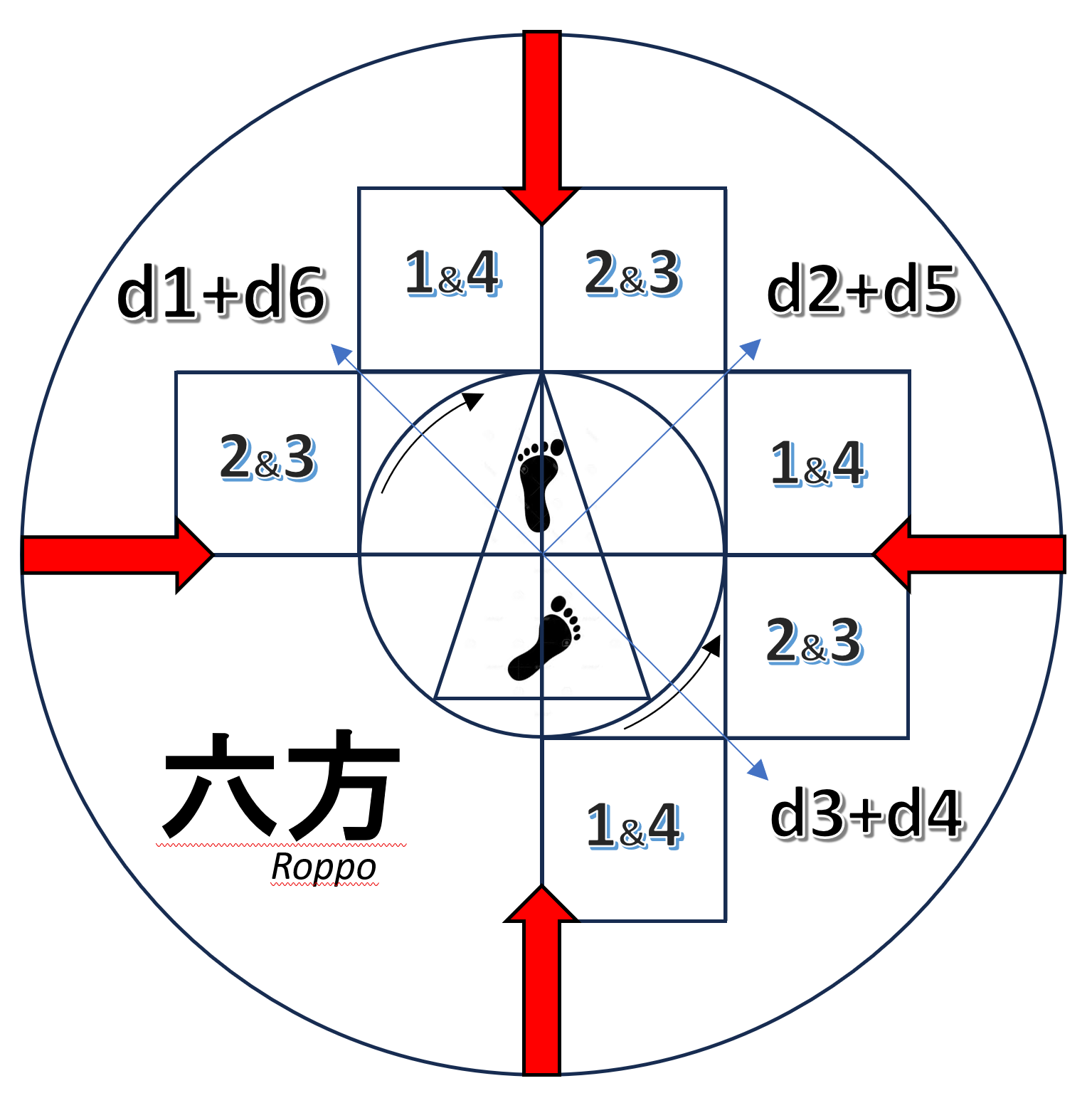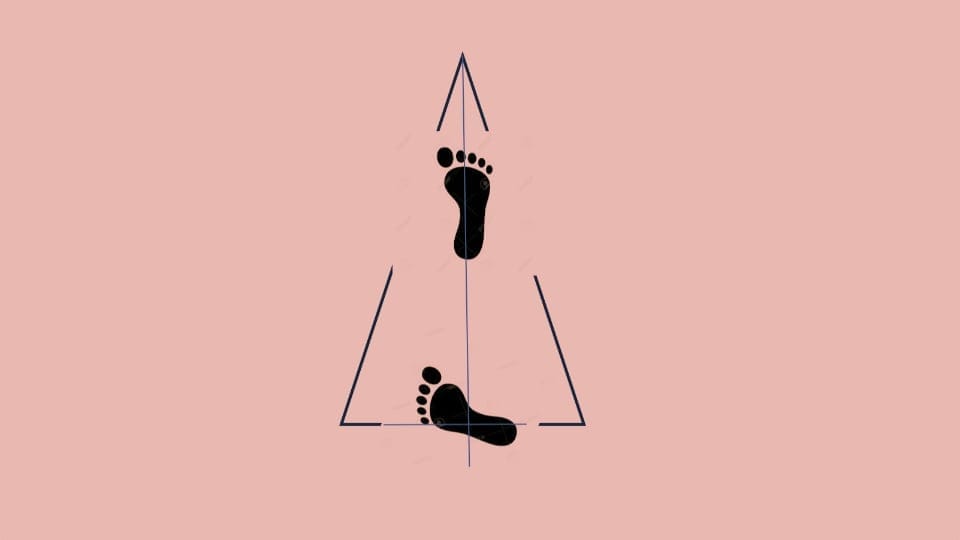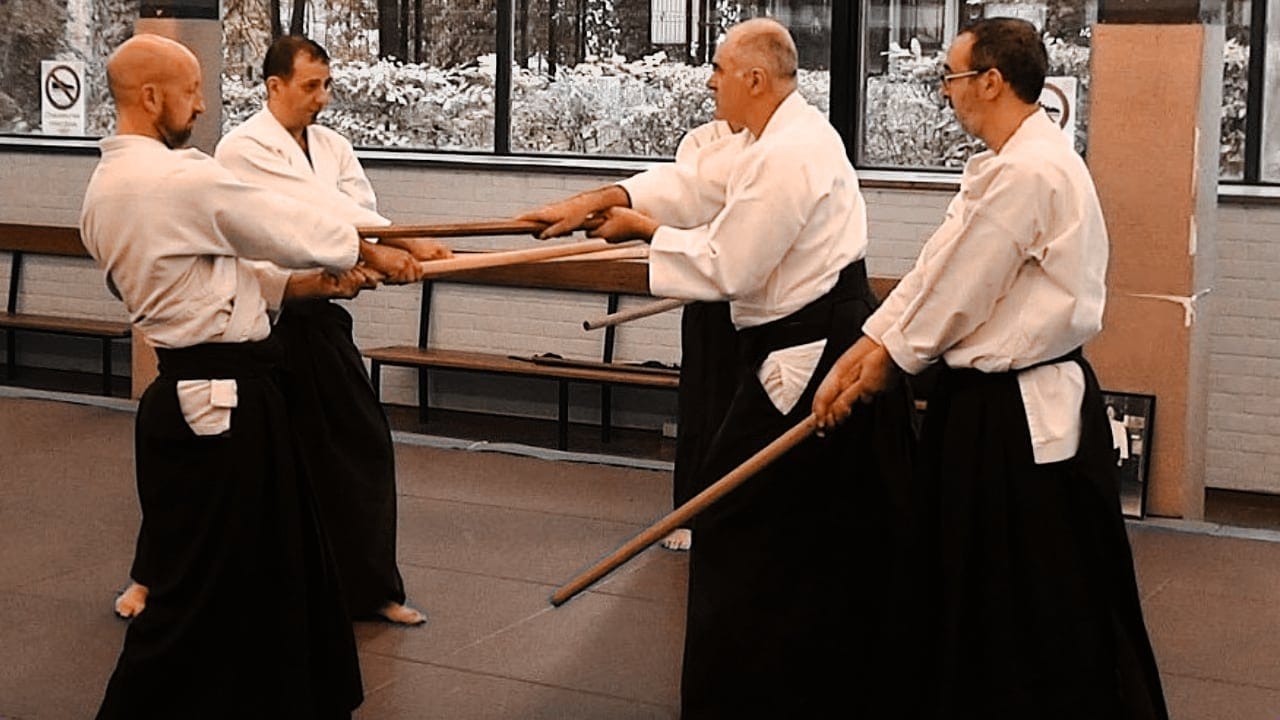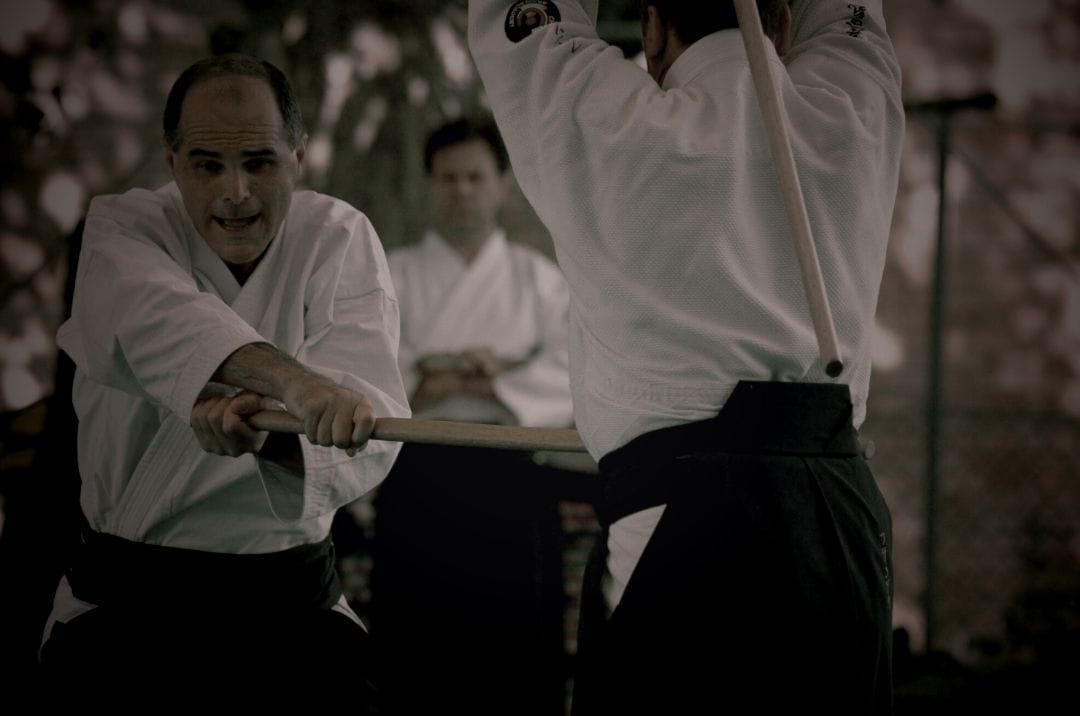The previous technical file provided background information on the distinction to be made in Aikido between position and movement.
It was explained in that file why the sword's shomen strike cannot be made when returning to the hanmi position, why it occurs earlier, when the first foot is moved from the hanmi position, that is when the feet are supported in a square (kenka goshi), when the second (rear) foot has not yet moved, therefore before returning to the hanmi position.
This is not a particularity of the sword. Whether with a sword, a jo or bare hands, you always strike on the square support of kenka goshi, never in hanmi. This is a general rule of Aikido.
The video re-emphasizes this general rule, this time using the jo's gaeshi tsuki thrust as an example :
In case you'd like confirmation from an authority above mine, here's a video by Morihiro SAITO demonstrating exactly the same way of thrusting gaeshi tsuki :
And should confirmation from an even higher authority be required, here's a photo of O Sensei performing gaeshi tsuki in exactly the same way :
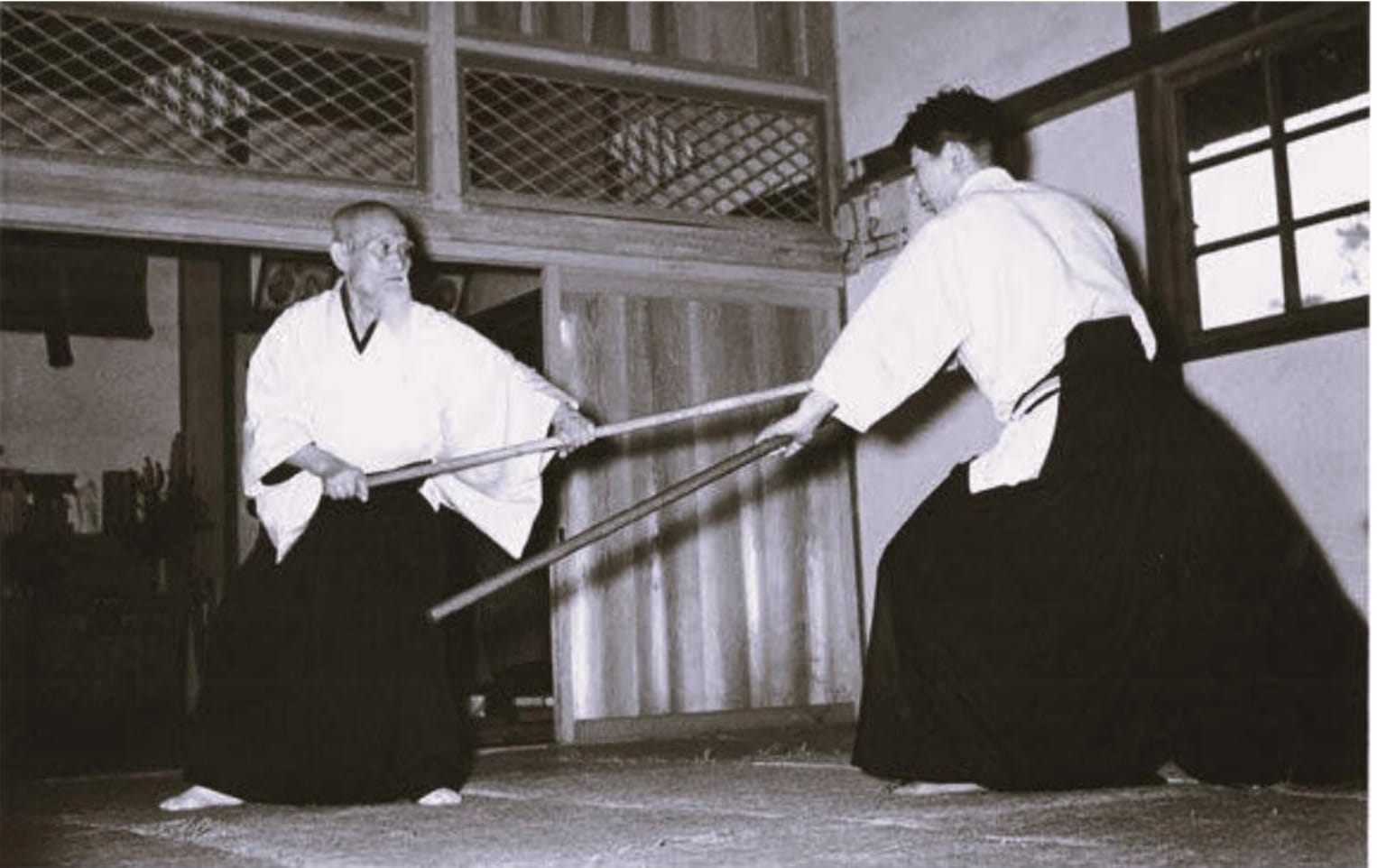
It is perfectly clear from this photo that O Sensei's back (right) foot has not yet moved at the moment of the strike. It is in the exact position it occupied the moment before, when O Sensei was still in hanmi position. Only the front (left) foot has moved to leave the hanmi position and strike.
O Sensei is therefore not in hanmi position at all in this moment of striking, since he has just left it, he is in kenka goshi support, his feet are in square. It's only in the next instant that he brings his right foot behind his left to return to the hanmi position, and in so doing moves away from uchi-jo (Morihiro Saito in the photo).
The return to hanmi is always a move away after the strike, a distancing from the opponent. This natural withdrawal of the body is a necessary consequence of the effacement of the rear hip. With weapons, it has an essential function : it enables the blade to be immediately withdrawn from the body of the opponent who has just been pierced.
For the sake of comparison, I've extracted the same moment from Master Saito's video. It also shows that his back foot has not yet moved at the moment of the strike, and that he is therefore not in the hanmi position, just like O Sensei :
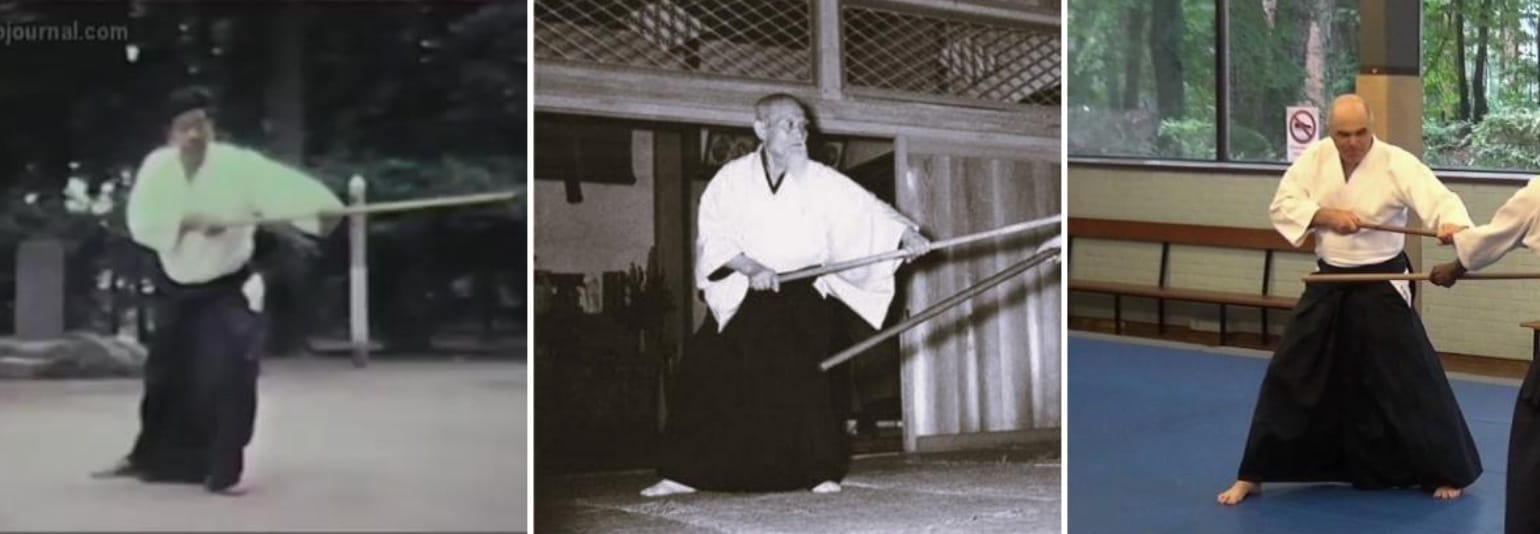
So, contrary to what is practiced in most dojos, the gaeshi tsuki strike is absolutely not done in the hanmi position.
It's a myth, a fantasy, and in truth an oversimplification that has led us to believe that everything in Aikido must be done in hanmi and that hanmi must be applied to everything. Hanmi is only the starting position for any action, a fundamental position indeed, because Aikido movement depends on it, but hanmi is never at the heart of the movement. No Aikido strike is made in the hanmi position, all are executed at the kenka goshi moment of the movement.
It's also important to understand that this kenka goshi time is artificially stopped in the photos, extracted from a movement. In reality, it's just a brief hold, and should not be confused with a position.
Modern Aikido - and, admittedly, a significant part of Iwama's Aikido - have confused what is support, and therefore movement, with what is position. Once again, the only position in Aikido is hanmi, which is a stop, a moment of waiting quite distinct from movement. All other images are, on the contrary, the supporting phases of a movement, and are therefore not positions.

